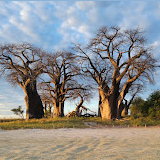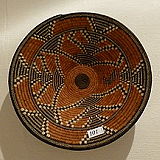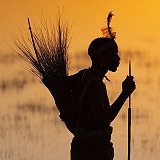
|
Nxia Pan National Park Botswana ☎ 27 21 701 0270 Last Updated: 10/30/2024 |
| Nxai Pan National Park is a stunning area in northeastern Botswana, adjacent to the Makgadikgadi Pans. It covers around 2,580 square kilometers and is named after the Nxai Pan, one of the fossilized salt pans in the region that dates back thousands of years. Unlike the barren salt flats of Makgadikgadi, Nxai Pan is covered with grasslands, dotted with small acacia trees, and surrounded by sandy savanna. | |
| The park is especially famous for its wildlife, which includes migratory herds of zebras and springboks that gather here during the rainy season (typically from November to April) to graze on the lush, green grass. This migration attracts predators such as lions, cheetahs, and leopards, making the park an exciting destination for game viewing. Other wildlife includes elephants, giraffes, jackals, and various antelope species, along with a rich array of birdlife. One of the park's most iconic landmarks is the Baines’ Baobabs, a cluster of seven massive baobab trees on Kudiakam Pan, named after the 19th-century artist Thomas Baines, who painted them during his travels. These ancient baobabs have barely changed over centuries, and their surreal presence against the vast pan landscape makes them a unique sight. Nxai Pan offers a remote, tranquil safari experience with its vast, open spaces and seasonal diversity, providing a unique contrast to more traditional game parks in Botswana. | |
Website Wikipedia Facebook
Botswana » Bwa
Place » Outdoors

|
Botswana Place » City Botswana is a landlocked country located in Southern Africa. It is bordered by South Africa to the south and southeast, Namibia to the west and north, Zimbabwe to the northeast, and Zambia to the north. The capital and largest city is Gaborone. 98 views 💖 1Botswana |

|
Makgadikgadi Pans Place » Outdoors The Makgadikgadi Pans in Botswana are among the largest salt flats in the world, sprawling across approximately 12,000 square kilometers. They are remnants of an ancient lake, Lake Makgadikgadi, which once covered a significant part of southern Africa. When the lake dried up thousands of years ago, it left behind a vast, shimmering expanse of salty terrain punctuated by sandy islands, ancient baobabs, and clusters of palm trees. 51 views 💖 1Botswana |
Write a Review :
Nxia Pan National Park
|
|
